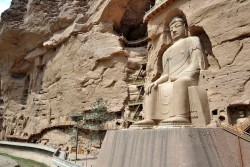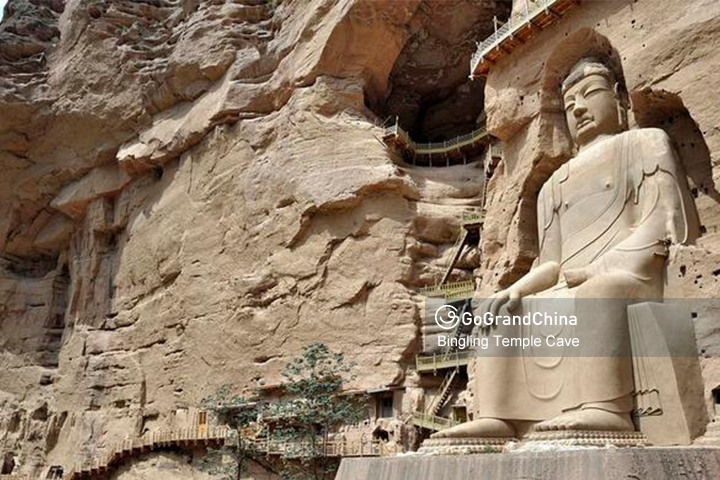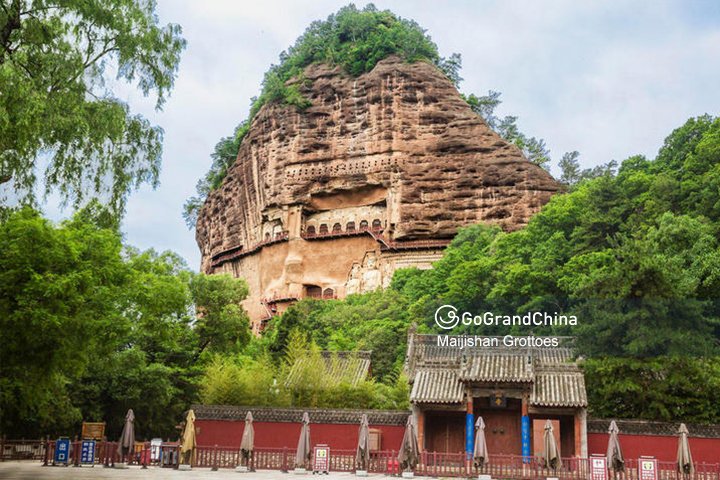

Introducing UNESCO World Heritage Sites in Lanzhou
Lanzhou & its surrounding areas have two cultural and natural places inscribed on the UNESCO World Heritage List as of 2020. Bingling Cave-Temple Complex and Maijishan Cave were inscribed on the UNESCO World Heritage List as part of "Silk Roads: the Routes Network of Chang'an-Tianshan Corridor" in 2014. If you happen to be in Lanzhou or anywhere else in Gansu province, be sure to drop by these amazing UNESCO World Heritage Sites. Each of Lanzhou's UNESCO World Heritage Site has a tale to tell. Book GoGrandChina tour packages to learn the tales of Lanzhou's UNESCO World Heritage Sites at the most affordable prices.
Bingling Cave-Temple Complex
Bingling Temple Caves are carved on various levels of the cliff of west Dasi Ravine, 350 meters in length and 60 meters in height, on Xiaojishi Mountain, northern bank of the Yellow River. They were built from late 4th century (Western Qin Dynasty), continued to be carved between 5th century and 10th century, and maintained in later dynasties of Song, Yuan, Ming, Qing. The main caves consist of 27-meter high Cliffside Great Buddha Cave (No. 171 cave, 27 meters high) of Tang Dynasty on the north of the cliff, and many medium and small caves. There are 185 nominated caves, 776 statues, and murals of 912 square meters. There are 4 caves of Western Qin Dynasty, 40 caves of Northern Wei and Norther Zhou Dynasties, 138 caves of Sui and Tang dynasties, 3 caves of Ming Dynasty and 62 inscriptions. Get more about Bingling Temple Grottoes.

Maijishan Cave-Temple Complex
The Maijishan Cave-Temple Complex, built and carved from mid-5th century AD to 13th century AD, is the second largest Buddhist Cave-Temple Complex in Hosi Corridor, only second to the Dunhuang Mogao Caves. It is a representative cave-temple complex of Western Wei and Northern Zhou dynasties and demonstrates further localization and development of Chinese Buddhistcaves after localization in Yungang Caves. Located in a strategically important transport location, Maijishan Cave-Temple Complex were influenced by Yungang and Longmen Caves in Central and North China, as well as South China and Western cultures. Palpable Chinese Buddhist architecture style and earliest illustrations of Buddhist Sutra can be observed in Maijishan Cave- Temple Complex, which, as key remains marked the turning period in Buddhism transmission westbound along the Slik Roads. Get more about Maijishan Cave-Temple Complex. Please feel free to contact GGC by WhatsApp (+86-18309280878), Wechat (+86-18309280878) or email (info@GrandChinaTravel.com) for a tailor-made tour of Maijishan Grottoes (cave temples) if you are interested.
